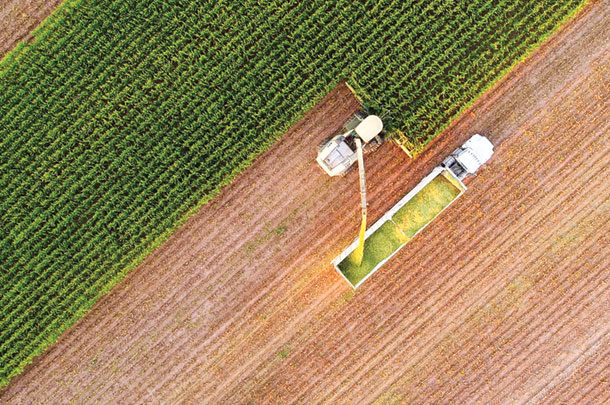To help answer this important question, Mycogen Seeds asked dairy farmers from upstate New York, northern Wisconsin and the hot, arid region of Southern California that very question.
Jon Greenwood
Greenwood Dairy Farm LLC
Potsdam, New York
1,400 cows
1,100 silage acres
David Jauquet
Jauquet’s Hillview Dairy Farm LLC
Luxemburg, Wisconsin
650 cows
585 silage acres
Colin Russell
Yosemite Jersey Dairy
Hilmar, California
2,200 cows
220 silage acres owned with 600 silage acres rented or purchased
How do you make your corn silage hybrid choices for the coming year?
Greenwood: We’re so far north in New York, so we’re going for the shorter-season hybrids because we want to make sure we reach maturity and achieve good starch levels. We try to plant what we know has worked. Occasionally, we will try a new hybrid that’s just coming out to see how that’s going to perform for us.
Jauquet: We believe in selecting multiple hybrids to diversify risk. A lot depends on the number of no-till and conventional-till acres we are going to have the next season. I’ll buy hybrids according to that and the relative maturity base to fit our geography. Having diverse maturities allows me to harvest all our corn in a two- or three-day window.
Russell: I try to spread my arms wide and bring in as much information as I can. The more information you have, the more informed decisions you can make. I think the big thing for us is: We look for the most digestible feed we can grow per acre because that’s going to give us the biggest return for the investment we’ve made in the expensive ground here in California.
What ultimately prompts you to choose one hybrid over another?
Greenwood: I’ll make my decision based on previous experiences but also on the knowledge of the local dealer and what he recommends.
Jauquet: For us, a lot of it is gut feel and what our cows are telling us specific to nutrition, digestibility and, ultimately, milk production. Through each season, we keep records to track our yield and quality results and refer back to when making hybrid decisions. We also rely heavily on observations by our nutritionist and agronomist. I lean on both those guys pretty hard.
Russell: I didn’t have any history with the hybrids we planted this year, so I went around and asked other farmers in the area. I drive around to see how their corn looked, what the ears looked like, etc. I think that’s a good thing to do, not just to have statistics of what it looks like on paper but also to get out and really see how a hybrid performs.
Are there environmental considerations in your region that factor into the hybrid selection process?
Greenwood: The first item on our checklist is the maturity days. We’re pretty far north – right up by the St. Lawrence River and the Canadian border – so our growing season is considerably shorter than even down in the Syracuse, New York, area. We sometimes get tempted to stretch the maturity and find ourselves in a bind as the season progresses and the days get shorter.
Jauquet: In our area, we take a closer look at how we are going to support the field with nutrient and plant management. We have a detailed nutrient management plan, and we stick to it by the letter. Our agronomist is good at recognizing nutrient needs of our crops throughout the growing season. We test certain fields at various times of the year to make sure the proper amount of nitrogen and micronutrients are available.
Russell: In California, irrigation plays a large role in growing corn silage, and we have a lot of nutrient water to get rid of and recapture. We also try to plan to get as many tons off that acreage as we can to increase profitability.
What’s your opinion of BMR silage hybrids?
Greenwood: BMR performs. We’ve planted BMR hybrids exclusively for a long time, mainly because of the digestibility and the positive milk production response our cows have on a BMR ration.
It’s important to work with a nutritionist who understands how to feed BMR hybrids because it’s different than feeding conventional corn silage. Using BMR has allowed us to feed rations with more corn silage because of the nutrient and digestibility advantages.
Jauquet: We plant 100 percent BMR corn silage to feed our milk cows. Right now, our cows are milking between 108 and 110 pounds per cow per day on a 70 percent forage diet. If done right, cows will milk well on high-quality forages like BMR.
Russell: We haven’t had a lot of history of planting and feeding BMR. Currently, we are using a TMF corn silage hybrid that combines high yields and provides an advantage in starch availability. Just like any other producer, digestibility is important to us, and we continue to evaluate all hybrid options based on recommendations from our nutritionist and seed advisers.
Advantages of buying now
Farmers understand the advantages of buying and prepaying seed before the calendar turns to 2019. Prepaying helps growers secure the hybrids in late fall while the experience from the growing season is fresh in their minds. Companies also offer competitive financing options.
Unlike with grain corn, where yield information is available immediately, silage corn decisions may need to be made without the benefit of seeing all the performance data from feeding and milk production.
Rely on insight from fellow farmers, your nutritionist and seed advisers, including reviewing all hybrid, feeding and performance data available, to provide strategies to make sound seed purchase decisions for a successful growing season and future ration. ![]()
PHOTO: Getty Images.

-
John Anderson
- Dairy Nutritionist
- Mycogen Seeds
- Email John Anderson











